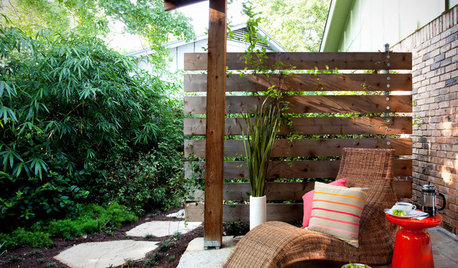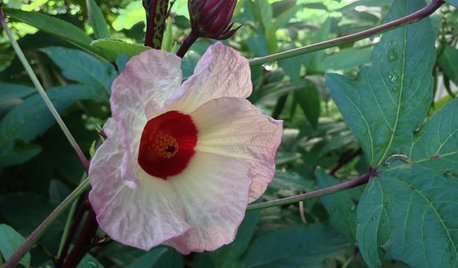Planting beans next to tomatoes - Do I need a barrier?
aeleva
10 years ago
Related Stories

EDIBLE GARDENSSummer Crops: How to Grow Tomatoes
Plant tomato seedlings in spring for one of the best tastes of summer, fresh from your backyard
Full Story
LIFEKitchen Traditions: Tomato Season Meets a Family Legacy
Somewhere a Sicilian great-great-grandmother is smiling at a bowl of American-made sauce
Full Story
SPRING GARDENINGInspiring Raised Beds for Fall and Spring Planting
Make Your Next Vegetable Garden Even Better with Beautiful Boxes and Paths
Full Story
SUMMER FRUITS AND VEGETABLESSummer Crops: How to Grow Beans
Grow your own beans for amazing variety and healthy, convenient produce all summer
Full Story
FARM YOUR YARDHow to Build a Raised Bed for Your Veggies and Plants
Whether you’re farming your parking strip or beautifying your backyard, a planting box you make yourself can come in mighty handy
Full Story
EDIBLE GARDENSGarden BFFs? Why Your Vegetables Are Begging for Companion Plants
Foster friendships among plants for protection from pests, pollination support and color camaraderie
Full Story
GARDENING GUIDES10 Easy Edibles for First-Time Gardeners
Focus on these beginner-friendly vegetables, herbs, beans and salad greens to start a home farm with little fuss
Full Story
LANDSCAPE DESIGNThe Best Winter Garden Project? Plan for Next Year
Consider these 9 ideas now for a highly personal, truly enjoyable garden come spring
Full Story
GARDENING GUIDESGreat Garden Combo: 3 Wonderful Plants for a Deer-Resistant Screen
Protect your privacy and keep deer at bay with a planting trio that turns a problem garden area into a highlight
Full Story
EDIBLE GARDENSGreat Design Plant: Roselle Tantalizes With Beauty and Flavor
Call it a fruit or a flower or a sweet vegetable. This hibiscus is so lovely, all that matters is calling it forth in your garden
Full StoryMore Discussions








digdirt2
pnbrown
Related Professionals
Danbury Landscape Architects & Landscape Designers · Accokeek Landscape Architects & Landscape Designers · Belmont Landscape Architects & Landscape Designers · Fort Lee Landscape Architects & Landscape Designers · Seabrook Landscape Architects & Landscape Designers · Gainesville Landscape Contractors · Edmond Landscape Contractors · Dudley Landscape Contractors · Laguna Hills Landscape Contractors · Lake Worth Landscape Contractors · Santa Maria Landscape Contractors · Seven Hills Landscape Contractors · Twin Falls Landscape Contractors · Cincinnati Driveway Installation & Maintenance · Thornton Driveway Installation & MaintenanceAnne Wolfley
aelevaOriginal Author
CarloMartin947
pnbrown
lavender_lass
ZachS. z5 Platteville, Colorado